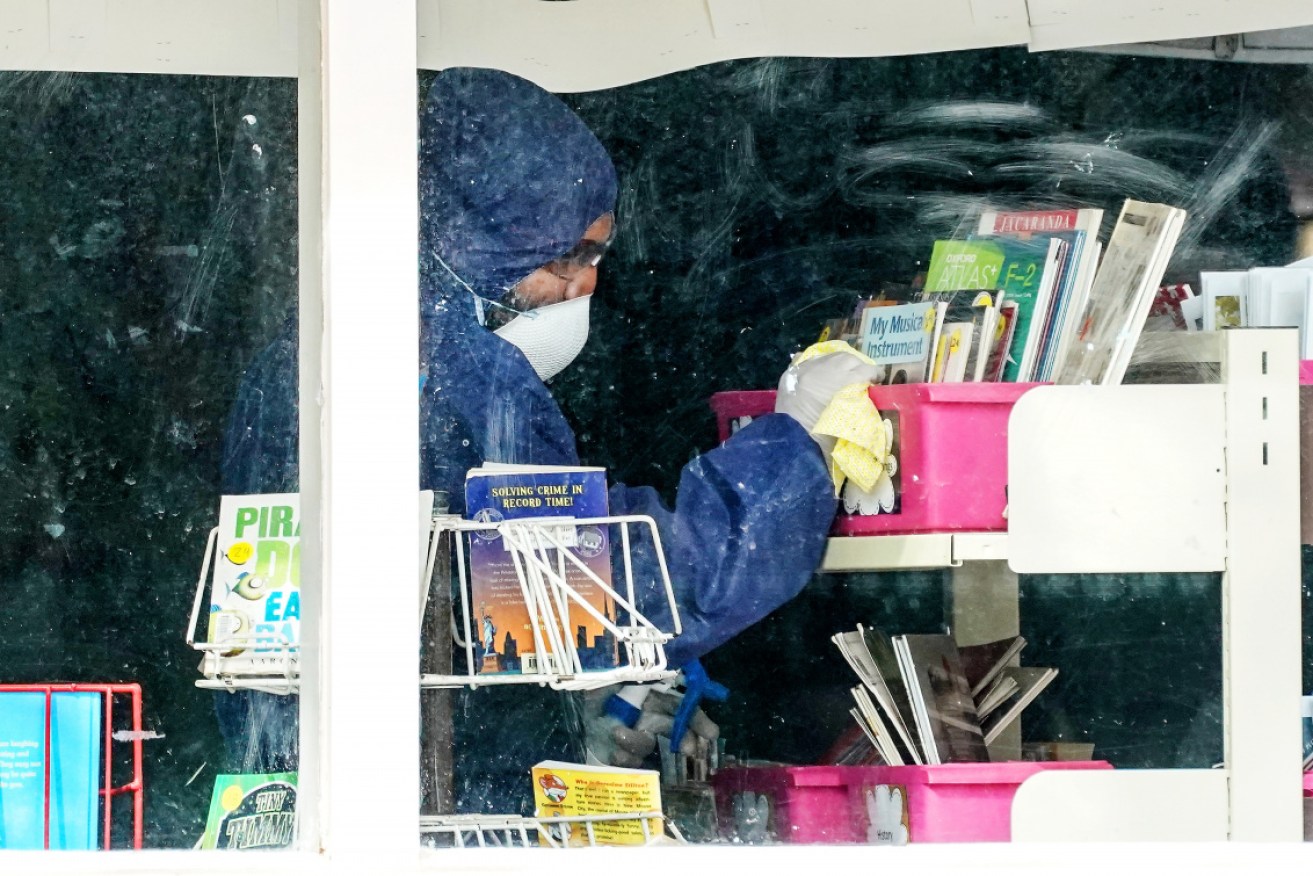Second coronavirus wave not inevitable, but each state must play its hand


Still a danger: A cleaner inside Meadowglen Primary School in Melbourne, which was shut down after a coronavirus scare. Photo: AAP
As politicians skirmish over easing coronavirus restrictions, a Melbourne-based infectious disease expert says any actions must recognise the epidemiology of the virus is different in each state.
Nic Geard, a senior lecturer at the University of Melbourne’s School of Computing and Information Systems and a senior research fellow at the Doherty Institute for Infection and Immunity, believes it makes sense that some states would move earlier toward easing restrictions than others.
Although there has been some criticism of Victorian Premier Daniel Andrews and his reluctance to lift lockdown restrictions in line with other states, Dr Geard said that observing what is happening elsewhere has helped Australia’s response to the pandemic and could help benefit Victoria.
“This is an unprecedented scenario and Australia is learning a lot by observing the experience of other countries,” Dr Geard told The New Daily.
“Similarly, we would expect close monitoring of the situation in different states and territories as restrictions are eased.
“However, the epidemiology in each state is different, so it makes sense that some states would move earlier toward easing restrictions than others.”
Tweet from @JennyMikakos
Victoria had been one of the first states to lock down and was considered to be doing well until this week when 11 new cases were discovered at a meatworks in Melbourne’s west and a teacher was diagnosed having worked at Meadowglen Primary School in Epping.
Dr Heard uses mathematical models to explore the behaviour of viruses and believes the easing of restrictions has to be assessed carefully in each region.
Those models, however, omit human behaviour and how the results might change in response to government and media communication, social and economic realities, and direct experience of COVID-19.
Queensland and New South Wales are planning for students to return to school starting from the middle of this month.
Those states, along with Western Australia, have also relaxed outdoor social restrictions, but Victoria is holding firm until it conducts more tests and tracing of recent outbreaks.
Dr Geard said it was no simple matter to decide between going hard with restrictions now to get on top of the virus, or loosen up a little and tighten them up later if there was a second wave.
“It’s a really difficult question that requires balancing a huge number of public health, economic and social factors,” he said.
“The recent Go8 report Roadmap to Recovery sets out these two options and the factors involved very clearly [and] I suspect that we will see states and territories move toward easing restrictions at different rates, informed by an assessment of their current epidemiology.
“Even if elimination were to be achieved at a state or national level, ongoing vigilance will still be required as restrictions are eased, as imported cases could easily spark a further outbreak.
But Dr Geard said a second wave is not inevitable.
A second wave is a possibility so long as the virus is still circulating somewhere in the world and we don’t have a vaccine, but it is certainly not inevitable.
“The current restrictions allow existing cases to be identified and isolated or recover before they can cause a second wave.
“The restrictions also buy us time to increase testing and contact tracing capacity, to help us rapidly respond to and contain any new cases once restrictions are eased.
“Australia is in an enviable position compared to many countries, in that we contained our initial outbreak early.
“However, the experience of Singapore and Japan illustrates that such control can be easily lost.”
In Japan, the northern region of Hokkaido lifted its lockdown of businesses and schools on March 19 after new cases had fallen to below two a day.
But by the end of April, officials reinstated the lockdown measures after being flooded with 135 new cases in a week.
Dr Geard said all viruses mutate, but the current evidence suggests this virus evolves slower compared to influenza, boding well for the development of a vaccine.
“There is no evidence at this stage that mutation is leading to more virulent or lethal variants of the virus,” he said.








